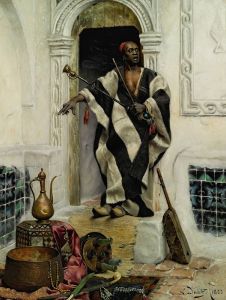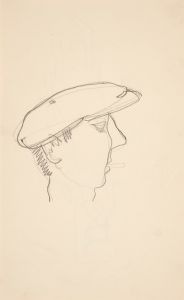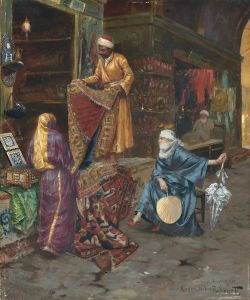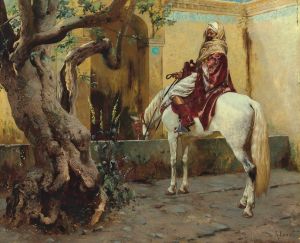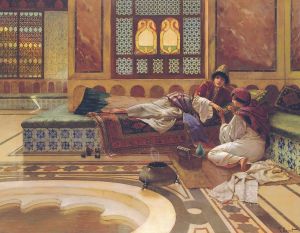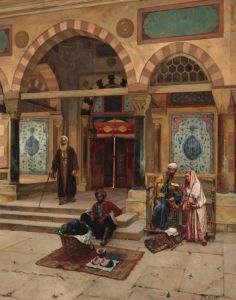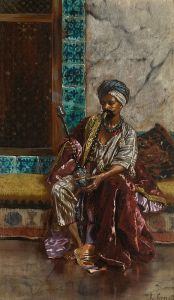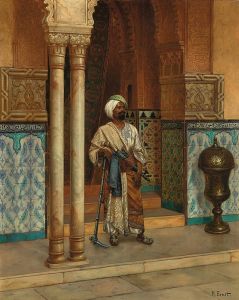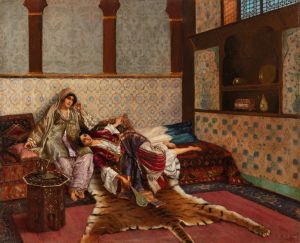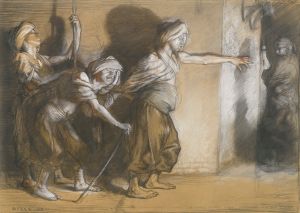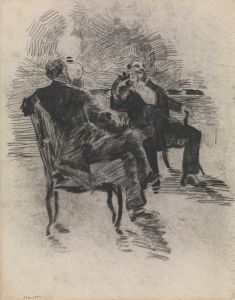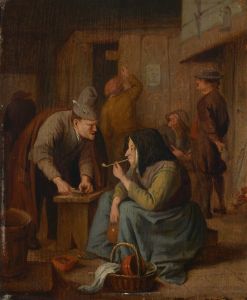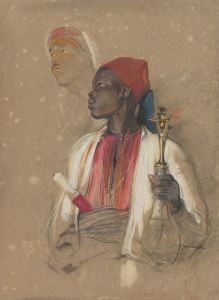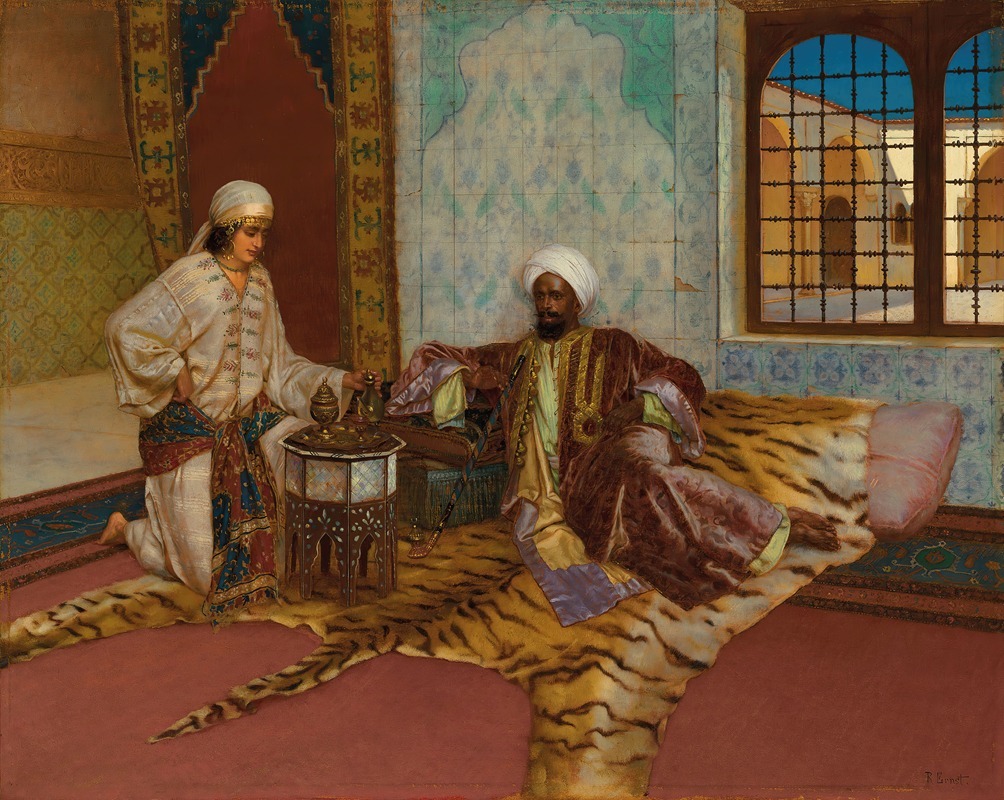
The narghile Smoker
A hand-painted replica of Rudolf Ernst’s masterpiece The narghile Smoker, meticulously crafted by professional artists to capture the true essence of the original. Each piece is created with museum-quality canvas and rare mineral pigments, carefully painted by experienced artists with delicate brushstrokes and rich, layered colors to perfectly recreate the texture of the original artwork. Unlike machine-printed reproductions, this hand-painted version brings the painting to life, infused with the artist’s emotions and skill in every stroke. Whether for personal collection or home decoration, it instantly elevates the artistic atmosphere of any space.
Rudolf Ernst was an Austrian painter known for his Orientalist works, which often depicted scenes inspired by the cultures and environments of the Middle East and North Africa. One of his notable paintings is "The Narghile Smoker," a work that exemplifies his fascination with the exotic and his meticulous attention to detail.
"The Narghile Smoker" portrays a scene centered around a man engaged in the act of smoking a narghile, also known as a hookah or water pipe. This traditional device is commonly used in various cultures for smoking flavored tobacco. Ernst's painting captures the serene and contemplative atmosphere often associated with this activity. The figure in the painting is typically depicted in traditional attire, which reflects the artist's interest in the authentic representation of the clothing and customs of the regions he sought to portray.
Ernst's work is characterized by its vibrant colors and intricate details, and "The Narghile Smoker" is no exception. The textures of the fabrics, the ornate design of the narghile, and the subtle play of light and shadow all contribute to the painting's lifelike quality. Ernst's ability to render such details with precision is a testament to his skill and dedication as an artist.
The Orientalist movement, of which Ernst was a part, was a trend in 19th-century European art that sought to depict the cultures of the East as seen through the eyes of Western artists. This movement was fueled by a fascination with the exotic and the unknown, often romanticizing and idealizing the subjects it portrayed. While Orientalist art has been critiqued for its sometimes stereotypical and colonial perspectives, it also provides a historical glimpse into the ways in which Western artists engaged with and interpreted Eastern cultures.
Rudolf Ernst was born in Vienna in 1854 and studied at the Academy of Fine Arts in Vienna. He later moved to Paris, where he became part of the vibrant art scene and developed his distinctive style. Ernst traveled extensively, drawing inspiration from his visits to countries such as Turkey, Morocco, and Egypt. These travels informed his work, allowing him to create paintings that, while filtered through a Western lens, were rich in detail and cultural references.
"The Narghile Smoker" is a reflection of Ernst's broader body of work, which often focused on domestic and leisurely scenes. His paintings provide insight into the daily lives and environments of the people he depicted, albeit through a romanticized perspective. Ernst's attention to detail and his ability to capture the essence of his subjects have made his works enduring examples of Orientalist art.
Today, Rudolf Ernst's paintings, including "The Narghile Smoker," are appreciated for their artistic merit and their role in the broader context of 19th-century art. They continue to be studied and exhibited, offering viewers a window into the past and the complex interplay between Western artists and Eastern subjects.





